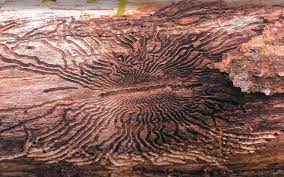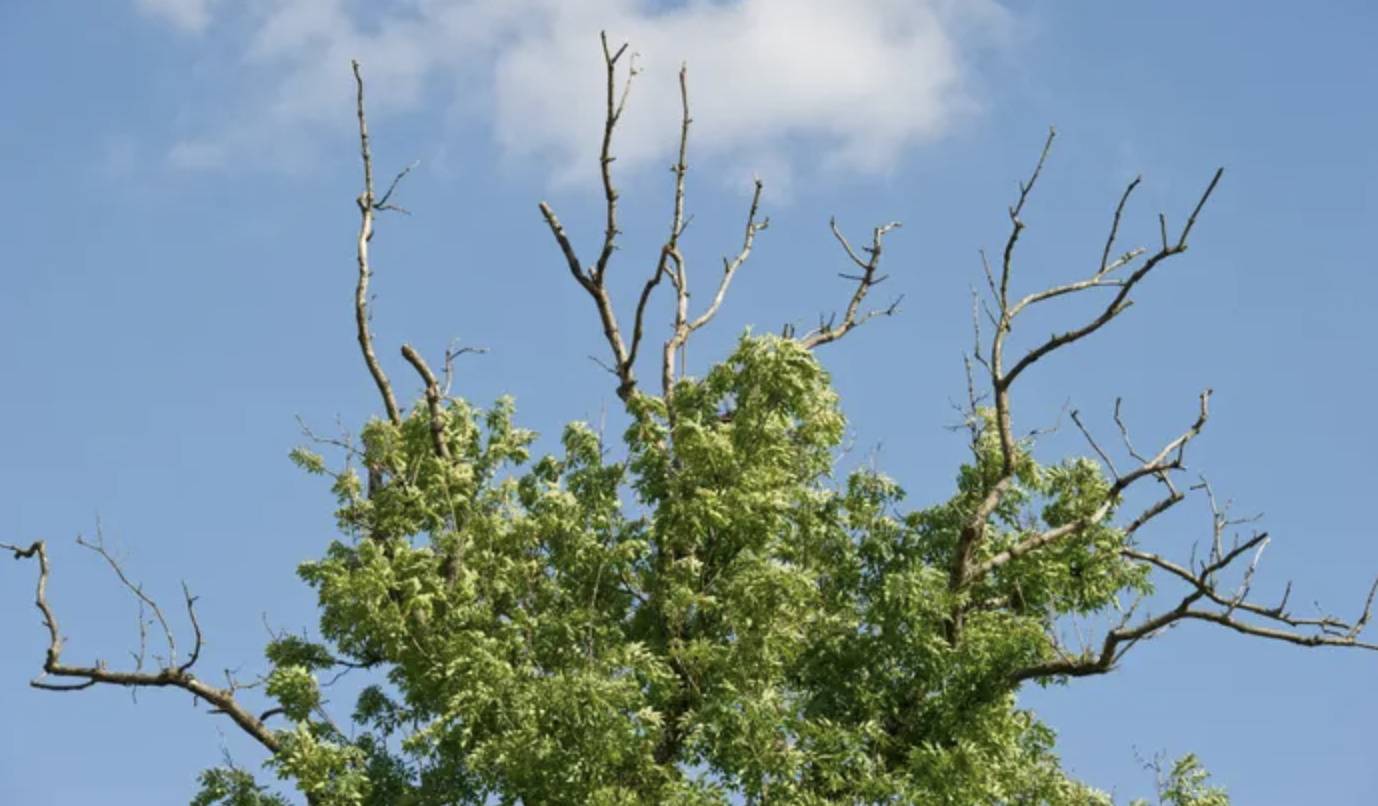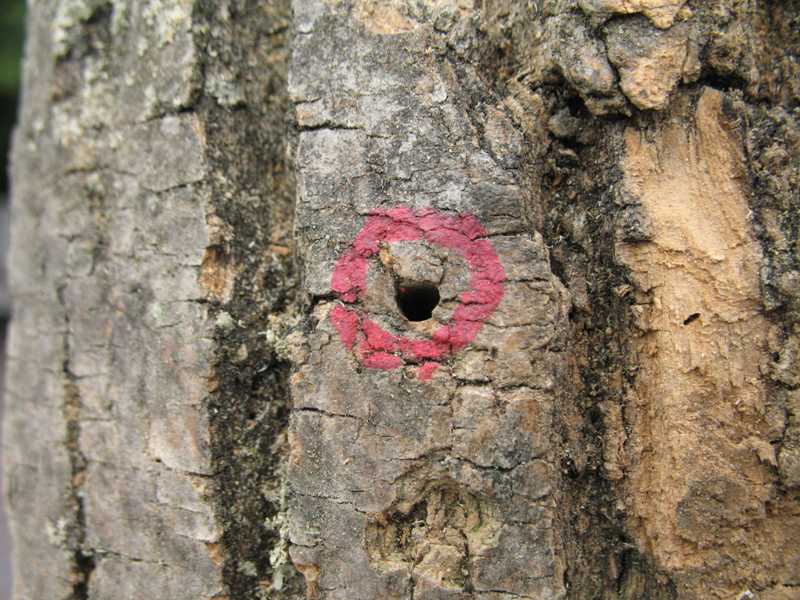Do you know how to spot the signs of the Emerald Ash Borer (EAB)? This destructive beetle is a major threat to ash trees in NYC. At Owens Brothers Tree Service, we’ve been caring for the trees of the Bronx and Manhattan since 1959. We understand the unique challenges of our urban environment and are dedicated to keeping our city’s trees healthy and thriving.
Know the Enemy – Signs of Emerald Ash Borer
If you have ash trees on your property, it’s important to be aware of the signs of an Emerald Ash Borer infestation:
- D-shaped exit holes: Adult beetles create these small, perfectly D-shaped holes in the bark, about 1/8 inch in diameter, by emerging from the tree. Inspect the upper branches and trunk, as this is where adult EAB typically emerges.

d-shaped exit holes
credit: arbor hills tree farm - Increased woodpecker activity: Woodpeckers love to feed on EAB larvae, so you may see areas of stripped bark where they’ve been searching for food. If you notice large sections of bark missing, it could signify a significant infestation.
- S-shaped tunnels: Look for winding, S-shaped galleries under the bark where the larvae have been feeding. These tunnels can be difficult to spot, but peeling back a piece of loose bark and seeing these winding paths is a clear sign of EAB activity.

- Crown dieback: The leaves at the top of the tree thinning or branches dying back are signs of stress caused by EAB feeding. This may only affect a few branches in the early stages, but as the infestation progresses, you may see dieback throughout the crown.

Is Your Ash Tree in Danger? We Can Assess the Damage
Are you concerned about the health of your ash trees? Owens Brothers offers free consultations to residents and businesses in the Bronx and Manhattan. Our trained arborists are experts in identifying EAB infestations and can assess the overall condition of your tree to determine the best course of action.
Treatment Options to Save Your Ash Tree
If your ash tree is infested with EAB, there may still be hope! Owens Brothers Tree Service offers several options for protecting your trees:
- Trunk Injections: This is the most effective treatment for EAB. Our specialists use the latest techniques to inject an insecticide directly into the tree to protect it from the beetles.
- Soil Drenches: In some cases, we may recommend applying insecticides to the soil around the tree.
- Tree Removal: If your tree is severely damaged, removal may be necessary. We offer free on-site inspections with no obligations to use us.
Beyond Treatment – What Else You Should Know
- Don’t move firewood: Transporting firewood can spread EAB to new areas. Always buy firewood locally.
- NYC Regulations: Be sure to check the latest NYC Parks guidelines on EAB for potential restrictions on the movement of ash wood and permitted treatment methods.
- Early Action is Key: Don’t wait to call us! The sooner you identify a problem, the better your chances of saving your ash tree.
Conclusion
Owens Brothers Tree Service is committed to protecting the trees of the Bronx and Manhattan from the Emerald Ash Borer. If you have ash trees on your property, don’t hesitate to contact us for a free consultation. Let’s work together to save these beautiful trees.
